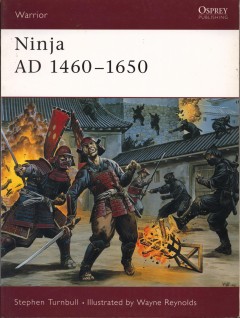Ditapis dengan

E-Book Propaganda and Neutrality: Global Case Studies in the Twentieth Century
This is the first broad-ranging, comprehensive and comparative study of the concepts of propaganda and neutrality. Bringing together world-leading and early career historians, this open access book explores case studies from the time of the First World War to the end of the Cold War in countries such as Belgium, Greece, Spain, Portugal, Ireland, Switzerland, Vichy France, USA, Argentina, Turkey…
- Edisi
- -
- ISBN/ISSN
- 9781350325531
- Deskripsi Fisik
- 329 halaman
- Judul Seri
- -
- No. Panggil
- 355.02 COR p

E-Book Military Revolution and the Thirty Years War 1618–1648: Aspects of I…
Military Revolution and the Thirty Years War 1618–1648 investigates change and decline in military institutions during a period of protracted and destructive European warfare. Conceptual background is provided by the Military Revolution thesis, which argues that changes in military technology and tactics drove revolutionary transformation in the way states organised and waged war in the early…
- Edisi
- -
- ISBN/ISSN
- 9789523690912
- Deskripsi Fisik
- 313
- Judul Seri
- -
- No. Panggil
- 303.66 BAC m

E-Book I'm Not Gonna Die in This Damn Place
By the time of the Vietnam War era, the “Mexican American Generation” had made tremendous progress both socially and politically. However, the number of Mexican Americans in comparison to the number of white prisoners of war (POWs) illustrated the significant discrimination and inequality the Chicano population faced in both military and civilian landscapes. Chicanos were disproportionately…
- Edisi
- -
- ISBN/ISSN
- 9781628953213
- Deskripsi Fisik
- 217 halaman
- Judul Seri
- -
- No. Panggil
- 940.54
E-book DOD Dictionary of Military and Associated Terms
Standardized military and associated terminology forms the foundation of joint doctrine. It enables the joint force to organize, plan, train, and execute operations with a common language that is clearly articulated and universally understood. Since 1948, military terms have been codified in the DOD Dictionary. Although different in purpose, policy documents also require standardized terminolog…
- Edisi
- -
- ISBN/ISSN
- -
- Deskripsi Fisik
- 360 hlm
- Judul Seri
- -
- No. Panggil
- 355.03 FAS d
E-book The Science of War : Strategies, Tactics, and Logistics
Today in the world of 24-hour news, we cannot help but be aware of the brutality and human cost of war. It is difficult to imagine the festive atmosphere of parades and cheering as local regiments marched off to fight in the American Civil War, or even in the early days of World War I. Yet in spite of our lack of illusion about the reality of war, the idea of war still holds an enduring fascina…
- Edisi
- -
- ISBN/ISSN
- 9781615307500
- Deskripsi Fisik
- 349 hlm
- Judul Seri
- -
- No. Panggil
- 355.4 CUR t

Ninja, A.D. 1460-1650
The ninja were the secret agents and assassins of feudal Japan and they remain a subject of enduring fascination. They first arose during the power struggles of 9th and 10th century Japan - where they catered for an increasing demand for spies, informants and assassins - and were used until the mid-1600s when, due to a campaign to destroy them, disappeared.
- Edisi
- -
- ISBN/ISSN
- 978-1-84176-525-9
- Deskripsi Fisik
- ilus 64 hlm. 18x25 cm
- Judul Seri
- -
- No. Panggil
- 355 TUR n
 Karya Umum
Karya Umum  Filsafat
Filsafat  Agama
Agama  Ilmu-ilmu Sosial
Ilmu-ilmu Sosial  Bahasa
Bahasa  Ilmu-ilmu Murni
Ilmu-ilmu Murni  Ilmu-ilmu Terapan
Ilmu-ilmu Terapan  Kesenian, Hiburan, dan Olahraga
Kesenian, Hiburan, dan Olahraga  Kesusastraan
Kesusastraan  Geografi dan Sejarah
Geografi dan Sejarah